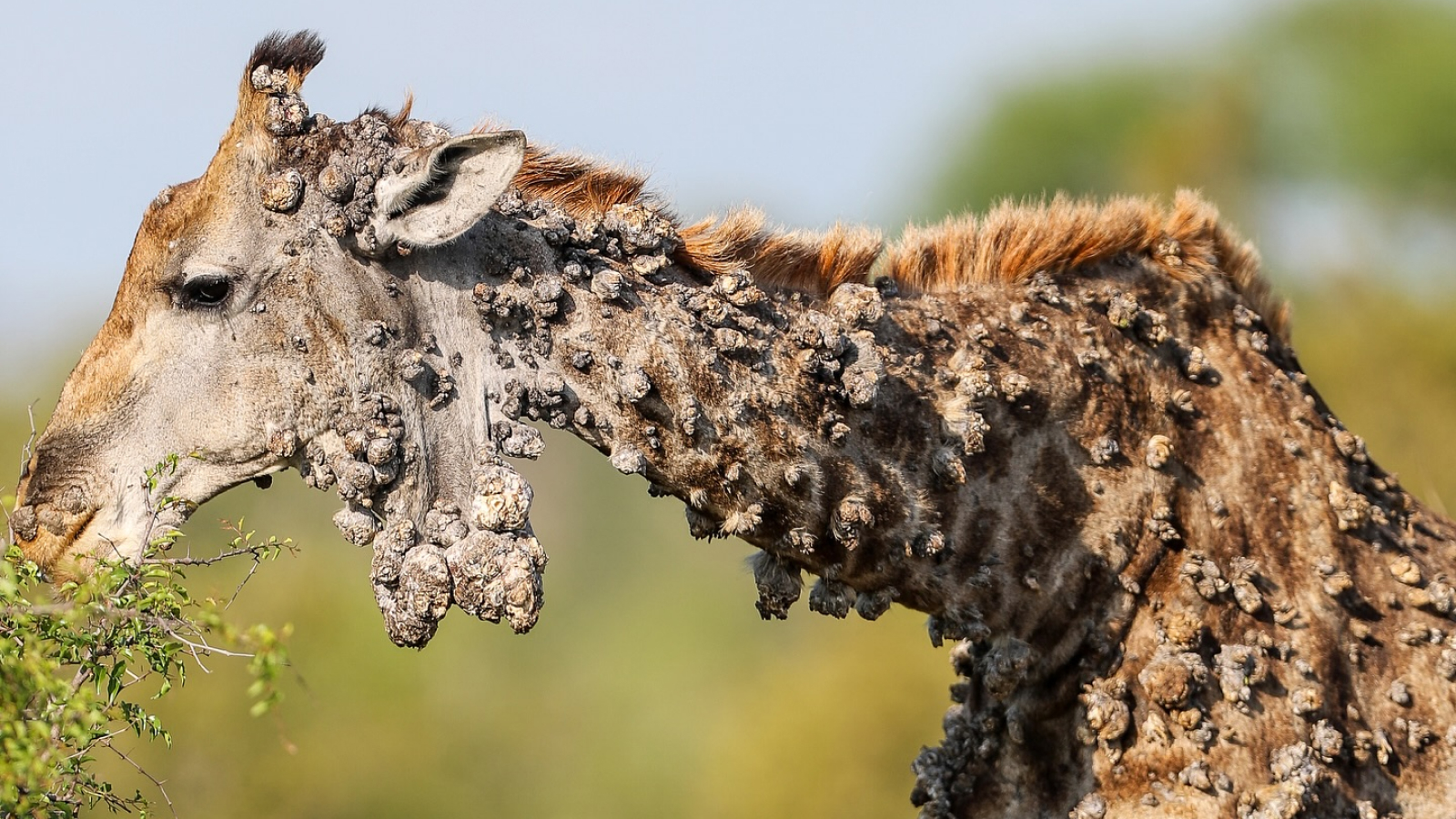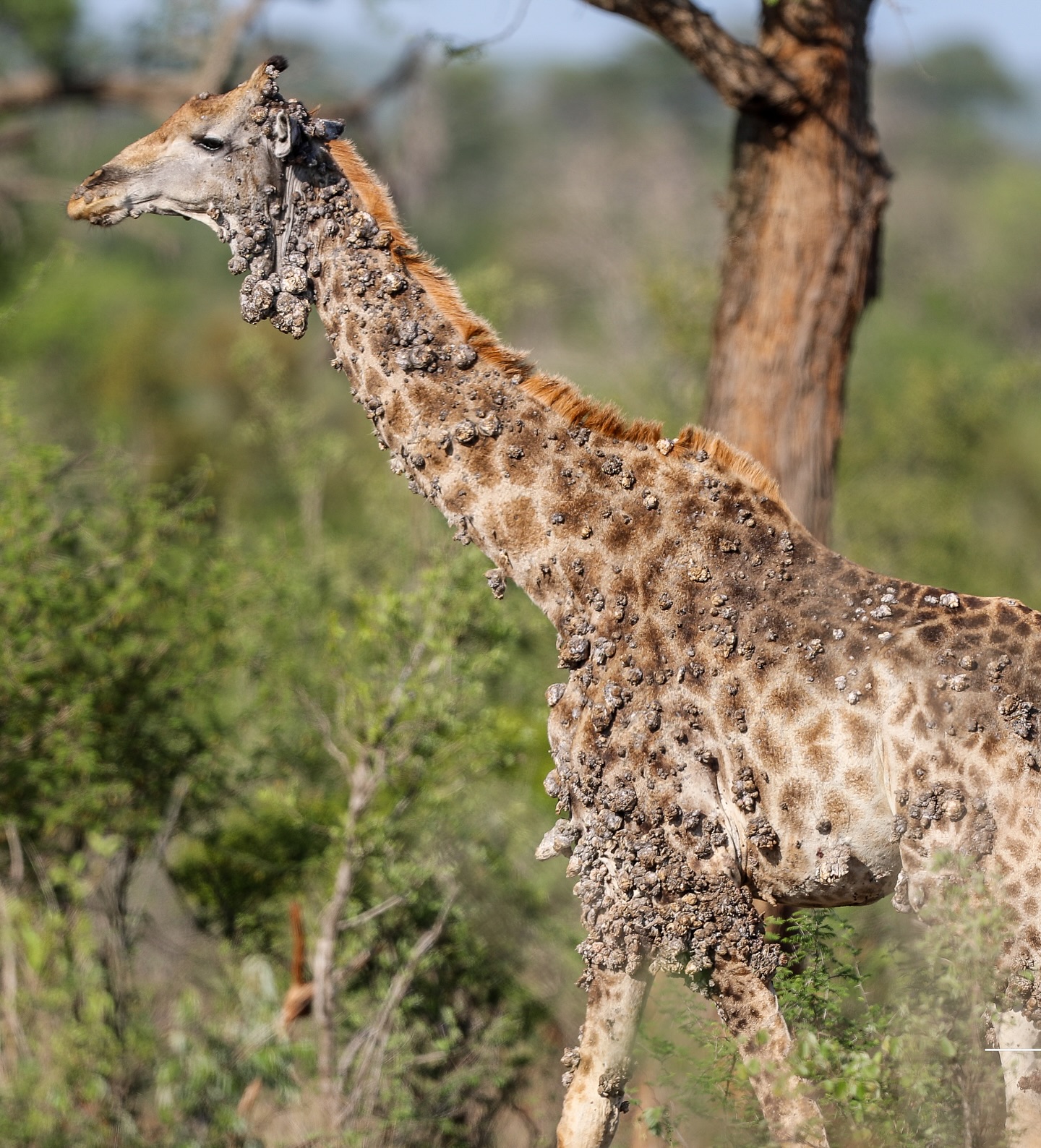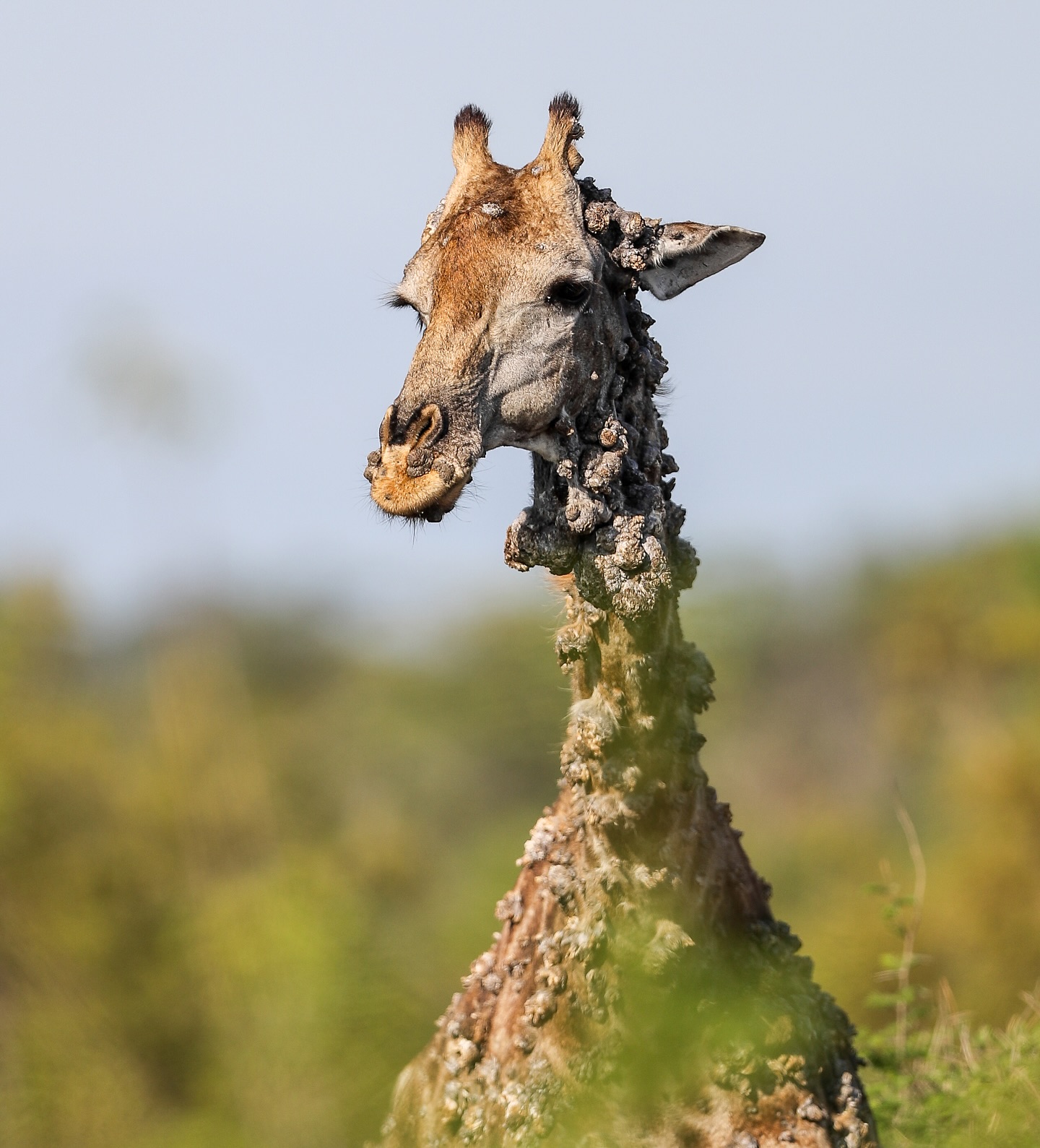See heartbreaking photos of 'bumpy' giraffe in South Africa with viral disease rarely seen in these tall animals
At Kruger National park, a wildlife photographer spotted a giraffe covered in hundreds of skin lesions that may be caused by a rare bovine papillomavirus.

A "bumpy" giraffe covered in huge lumps at a national park in Africa may be infected with a virus that rarely affects these tall animals, experts say.
Photos of the giraffe (Giraffa camelopardalis), captured by wildlife photographer Marius Nortje in Kruger National Park, South Africa, show growths on the animal's face, neck and torso.
This is a common sign of an infection with papillomaviruses — a family of viruses that spread through direct contact with infected animals or contaminated environments. Papillomaviruses also infect humans — notably human papillomavirus (HPV), which is the most common sexually transmitted infection in the United States.
Gemma Campling, head veterinarian and CEO of Worldwide Vets, a global veterinary organization, suspects this giraffe may have contracted bovine papillomavirus (BPV), which is common in cattle and known to occasionally infect giraffes, antelopes and zebras. Worldwide Vets posted the images of the giraffe on Facebook on Jan. 6.
"Giraffes being affected by this virus is quite a new and rare occurrence, and we have few cases to learn from, so it's hard to say if the giraffe will heal and recover," Campling told Live Science in an email.
Related: 'World's rarest' giraffe born without spots at Tennessee zoo
In 2007, researchers reported on two giraffes in Kruger National Park that had "extensive lesions" similar to those seen in horses infected with BPV. To prevent the infection from spreading, both giraffes were euthanized, and subsequent DNA analyses detected BPV in their lesions, Campling said.
Sign up for the Live Science daily newsletter now
Get the world’s most fascinating discoveries delivered straight to your inbox.
Although BPV is suspected to be the cause, Campling also suggested the latest case could be caused by Giraffa camelopardalis papillomavirus 1 (GcPV1), a variant discovered in 2017. However, neither have been confirmed.

How did the giraffe get sick?
Researchers still aren't certain how the giraffe became infected. "Generally giraffes don't have much direct physical contact with one another, so it is more likely that fomites are responsible for spread," Campling said. Fomites are objects or materials within an environment that are likely to carry and spread an infection to a new host.
Oxpecker birds (Buphagus) and ticks could have played this role in spreading the virus, Campling said. Oxpecker birds remove parasites, like ticks, buried deep within the skin of animals, and the birds also sometimes eat ungulates' raw tissue (ungulates are hooved animals like giraffes). They "hop quickly from animal to animal through the day, and can cover large distances thus potentially spreading the virus quickly, as they are contaminated with blood from many hosts on their beaks," Campling said.
Ticks can also spread the virus from the blood of an infected individual to a new host, such as a giraffe.
Giraffe symptoms and treatment
In giraffes, papillomaviruses cause scaly lesions on the skin that spread over time, sometimes merging into larger masses. "New lesions begin as a thickened plaque on the skin," Campling said. "The lumps grow and rupture, leaving a raw, ulcerated area that scabs. This makes it easier for the disease to spread as the skin is already broken."

There is no treatment for these viruses in giraffes, but sometimes lesions can regress spontaneously, leading to recovery. In severe cases, it can interfere with movement and feeding or lead to secondary infections that can be fatal.
In this case, the growths do not appear to be affecting the giraffe's ability to feed or see. "This means the giraffe is likely to live out a normal lifespan despite its condition," Campling said.
There are currently no plans to kill the Kruger giraffe. "Rangers and vets are aware of the disease and have elected not to euthanize it right now, because the pathogen is known, and is not spreading very fast," Campling said.

Elise studied marine biology at the University of Portsmouth in the U.K. She has worked as a freelance journalist focusing on the aquatic realm. Elise is working with Live Science through Future Academy, a program to train future journalists on best practices in the field.
You must confirm your public display name before commenting
Please logout and then login again, you will then be prompted to enter your display name.
